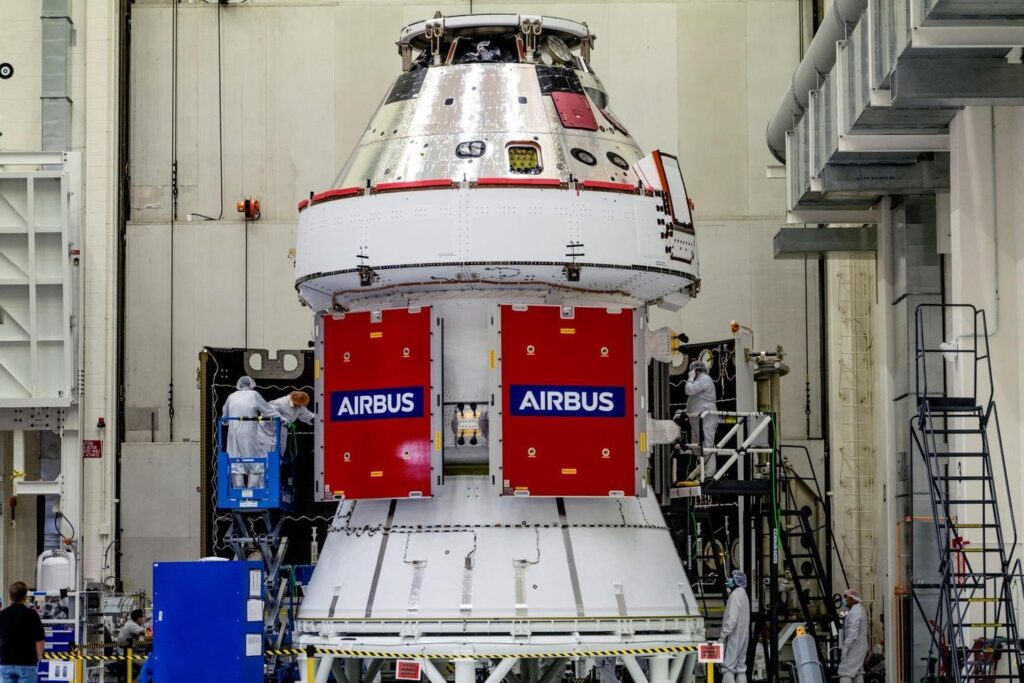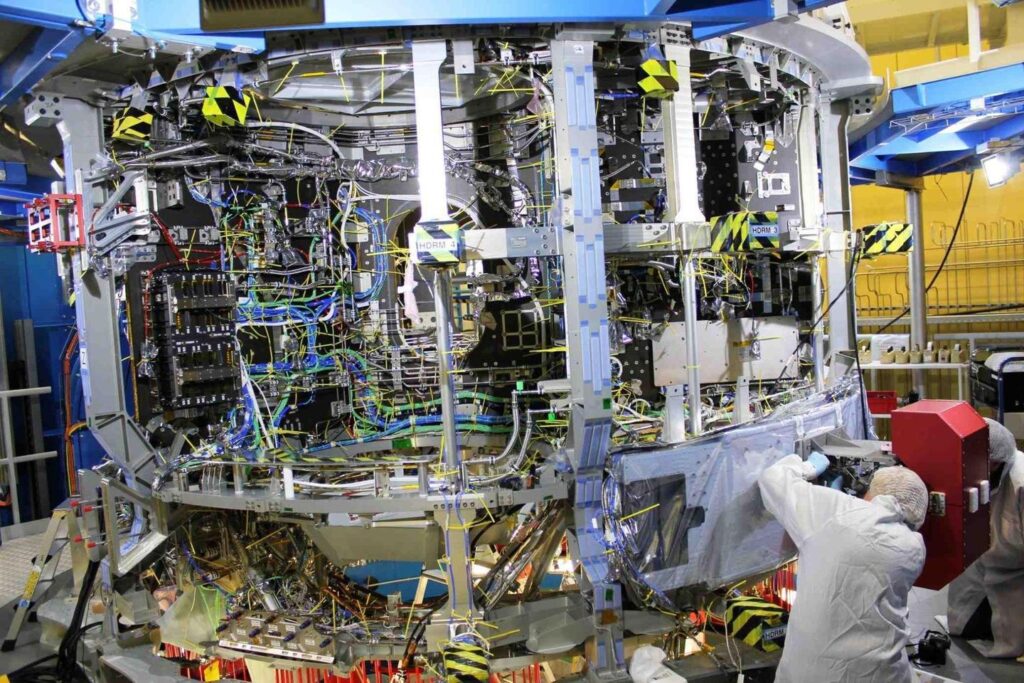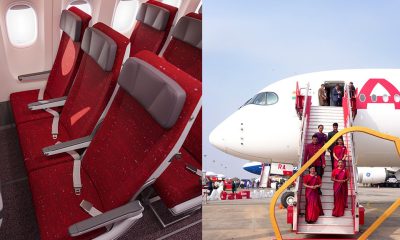Aerospace
Fly me to the Moon! NASA’s Orion spacecraft with the Airbus-built European Service Module is ready for launch
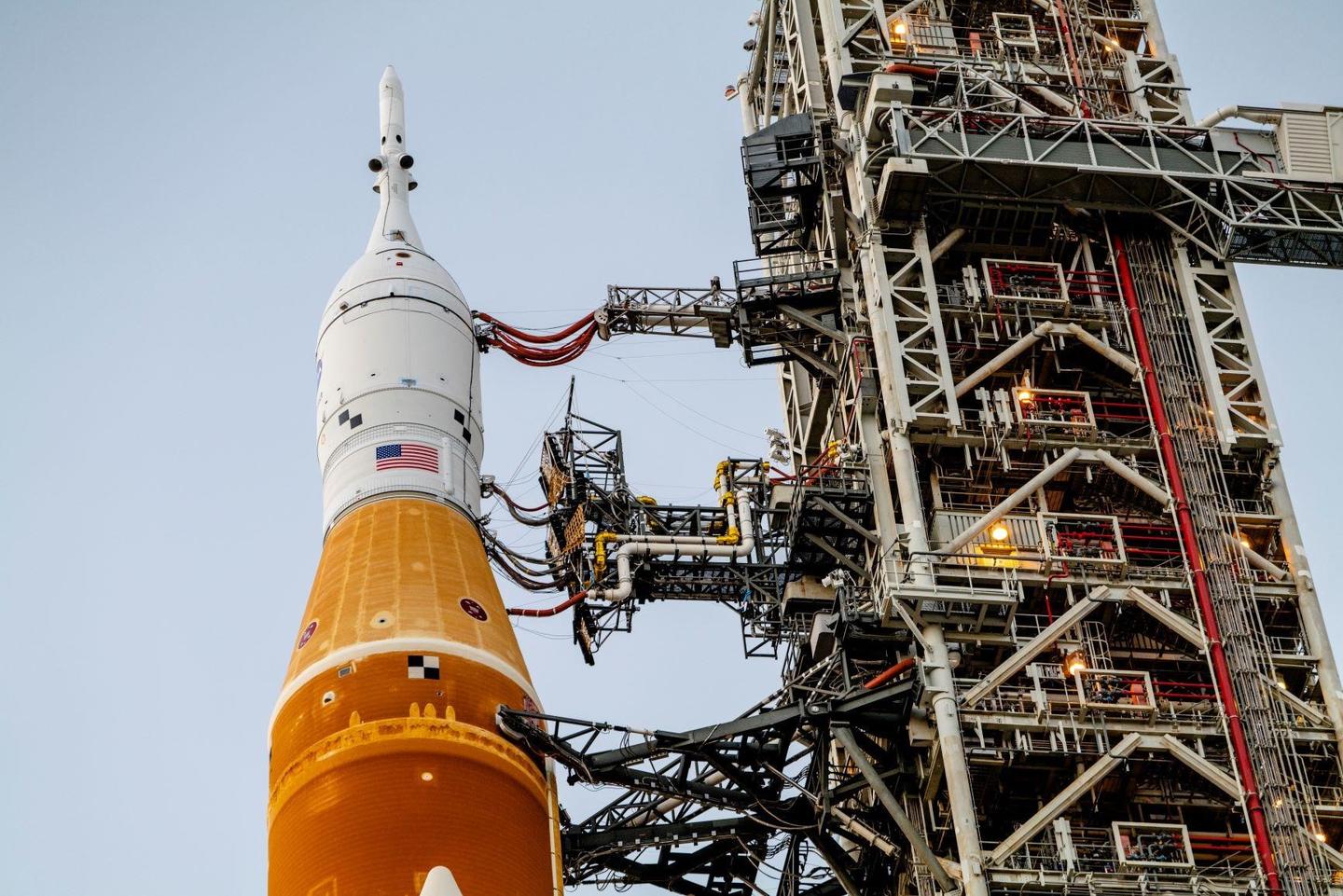
In a few days, NASA’s Orion spacecraft will lift off on its lunar mission from Florida’s Kennedy Space Center. As part of NASA’s Artemis missions, the European Service Module (ESM), constructed by Airbus, will power Orion to and from its lunar orbit. As the primary contractor for the European Space Agency ESA, Airbus developed the ESM and is currently designing and producing five further ESMs.
Courtesy: Airbus
The ESM is a key element of Orion, the next-generation spacecraft that will carry astronauts beyond low Earth orbit for the first time since the Apollo programme ended in the 1970s. The module provides propulsion, power and thermal regulation and will supply astronauts with water and oxygen on future missions. The ESM is installed below the crew module.
The launch of NASA’s Orion spacecraft with the European Service Module has historic significance 50 years after the last astronaut lunar mission and is another major step toward returning astronauts to the Moon. The programme is now moving forward and we are ready for a return to the lunar surface in 2025 together with our customers ESA and NASA and our industrial partner Lockheed Martin Space,” said Jean-Marc Nasr, head of Space Systems at Airbus.
Courtesy: Airbus
The ESM is a cylinder about four metres high and wide. It is similar to the European Automated Transfer Vehicle (ATV 2008 – 2015), also built by Airbus, and features the signature four-bladed solar array (19 metres in diameter when deployed), which generates enough power for two households. The service module’s 8.6 tons of propellant power the main engine, eight auxiliary engines and 24 smaller thrusters ensure navigation and attitude control.
At launch, the ESM weighs a total of just over 13 tons. In addition to serving as the main propulsion system for the Orion spacecraft, the ESM will enable orbital maneuvering and attitude control. It will provide the crew with key life support elements such as water and oxygen and regulate thermal control while docked to the crew module. Also the unpressurized service module can be used to carry additional payloads.
For the first landing on the Moon, the Orion spacecraft will dock with the international Lunar Gateway – a lunar-orbiting platform that will enable sustained space exploration and expand humanity’s presence in space.

Aerospace
China Secures Production Certificate for Mass Production of Pilotless eVTOL Aircraft

The first passenger-carrying pilotless electric vertical takeoff and landing (eVTOL) aircraft in the world, the EH216-S, has received the Production Certificate for its eVTOL aircraft from the Civil Aviation Administration of China (CAAC).
This is a significant milestone for EHang Holdings Limited, the leading UAM technology platform company in the world. This outstanding accomplishment is another big step towards mass manufacturing for the eVTOL aircraft and the ensuing commercial operations, building on the ground-breaking acquisition of the Type Certificate and the Standard Airworthiness Certificate for the EH216-S.
The PC is a crucial certificate that the aircraft maker receives from the CAAC, the country’s aviation authority. By obtaining this certificate, EHang has demonstrated that it has set up a quality management system for mass production that satisfies the airworthiness regulation standards set forth by the CAAC, and the company has been given permission to continue producing mass quantities.
It is also a strong guarantee of the calibre of the goods made by EHang. Raw materials, supplier management, manufacturing organisation, production quality control, aircraft pre-delivery test, after-sales repair and maintenance, etc. are all included in the mass production quality management system for the EH216-S.
To ensure that every aircraft and its components that roll off the production line strictly adhere to the approved type design and safety requirements, the system sets clear guidelines and documentation for every step in the production procedure. This ensures comprehensive traceability and safety control.
Aerospace
Four Airbus A380 Superjumbos lined up to be scrapped

In a strategic move aimed at reclaiming valuable resources from the iconic Airbus A380 aircraft, VAS Aero Services and Dr. Peters Group have announced a significant collaboration.
This partnership marks a milestone in aviation logistics and aftermarket services, with four of these colossal planes slated for teardown and redistribution of used serviceable material (USM).
The venture between VAS Aero Services, renowned for its expertise in aircraft dismantlement, and Dr. Peters Group, a prominent Germany-based investment fund management firm, underscores a commitment to sustainable aviation practices. This isn’t their first foray into scrapping A380s; their successful partnership has already seen the dismantlement of these aircraft, making them pioneers in this niche.
Under the agreement, the latest consignment brings the tally to eight A380s entrusted to VAS by Dr. Peters Group. Managing Director Christian Mailly of Dr. Peters Group emphasized the trust placed in VAS, citing their unparalleled capabilities in dismantlement and aftermarket sales network. It’s a strategic move in response to the growing demand for quality USM parts, particularly with the resurgence in reliance on the A380.
Notably, the teardown process will be carried out at various locations, optimizing the positioning of harvested parts to cater to different markets. While some parts will be positioned in Europe to support operators in the region and the Middle East, others will remain in the Asia-Pacific region. This meticulous strategy ensures efficient access to spare parts, benefiting MROs and airlines across these markets.
The decision to retire these A380s comes at a time when operators are reassessing fleet strategies amidst evolving market dynamics. Despite initial plans for quick retirement due to the emergence of more fuel-efficient alternatives, factors such as a rebound in long-haul demand and delays in new widebody deliveries have prompted operators to reconsider. The A380, with its unique capacity and capabilities, presents a practical solution for short-term capacity management.
Aerospace
Rolls-Royce Launches Test Flights for Revolutionary Pearl 10X Engine
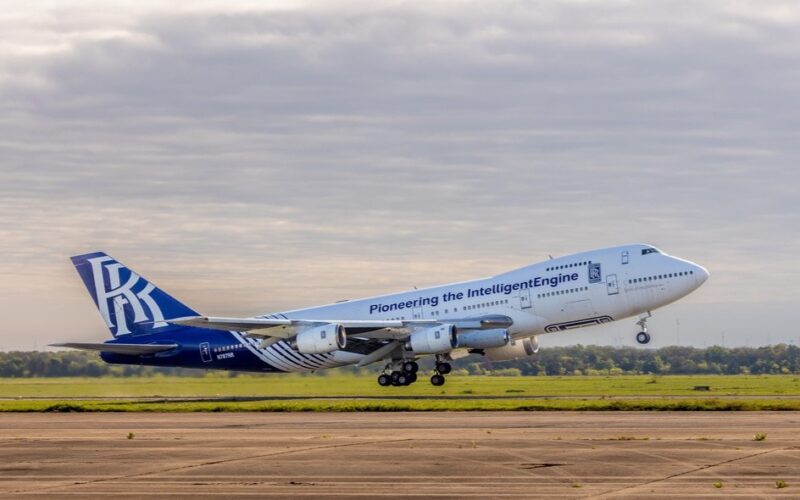
Rolls-Royce reports that the company’s dedicated Boeing 747 flying testbed has seen the successful start of the Pearl 10X, their newest aero engine designed for the business aviation industry.
Dassault, a French aircraft manufacturer, has decided to use this engine only to power their newest flagship, the Falcon 10X. As stated at last year’s Capital Markets Day, the commencement of flight testing represents a significant milestone for both Rolls-Royce and the Pearl 10X programme as the company concentrates on expanding in the business aviation industry.
The first Rolls-Royce engine to power a Dassault business jet is the Pearl 10X, the newest engine in the state-of-the-art Pearl engine family. The Pearl 10X was chosen by the French aircraft manufacturer as their new flagship model, demonstrating even more of Rolls-Royce’s dominance in the business aviation engine market.
Over the next few months, pilots and flight test engineers from Tucson, Arizona, USA, will put the engine through its paces. The flight test programme will comprise testing of the nacelle’s anti-icing system, in-flight relights, engine performance and handling checks at various speeds and altitudes, and fan vibration tests at various altitudes.
The new auxiliary gearbox, which enables higher additional power extraction, and the ultra-low emissions ALM combustor, which is compatible with 100% Sustainable Aviation Fuel (SAF), have undergone extensive testing as part of the ground-based development programme thus far. The engine will be the most potent business aviation engine in the Rolls-Royce lineup. It exceeded its intended thrust levels during the very first test run. With over 2,300 testing hours successfully completed on the Pearl 10X engine configuration as well as the Advance 2 demonstration, the programme is moving forward at a rapid pace.
With the most economical engine core available for business aircraft, the Advance2 engine, coupled with a high-performance low-pressure system, gives the Pearl 10X an exceptional thrust of over 18,000 lbf. With a 5% increase in economy over the previous generation of Rolls-Royce commercial aviation engines, the Pearl 10X

